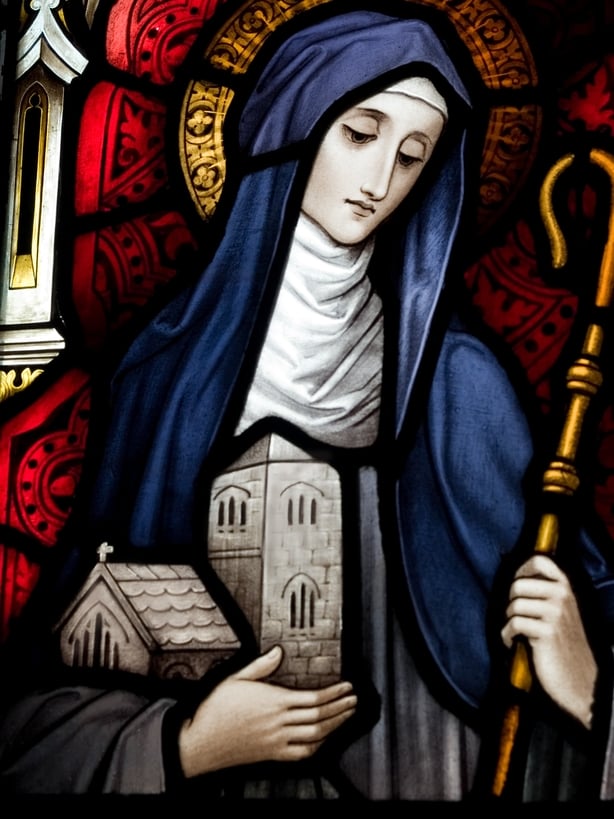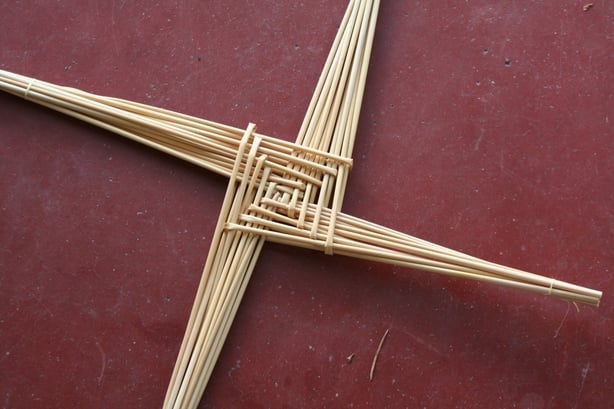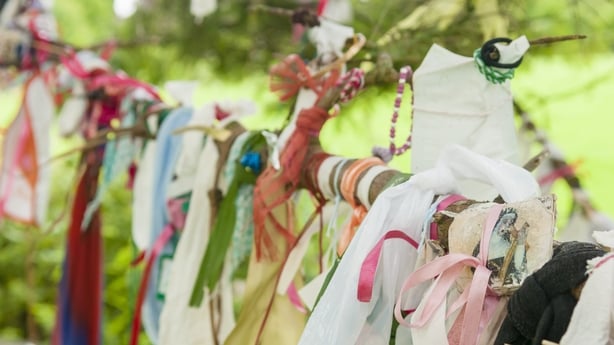Although the first of February has always marked St Brigid's day, 2023 was the first year to see the day dedicated to the saint as a public holiday.
We sat down with Catherine Healy, Historian in Residence at EPIC (Irish Emigration Museum) to discuss the history, myths, miracles, and traditions associated with Ireland's female patron saint.
Sweet victory for all Mná! #BrigidsDay is Ireland's new annual national holiday from 2023. Finally we have a day in celebration of all women, our Celtic Goddess, Matron Saint & #Imbolc, ancient festival of Spring. #Herstory is brewing some spectacular mischief, Brigid style🌟⚡🔥 https://t.co/Y4XCHEb3HE
— HerstoryIreland (@HerstoryIreland) December 3, 2021
According to Healy, the details surroundings Brigid's life are sparse, and what we do know comes from the writings of a churchman named Cogitosus around 658AD - about two centuries after her death.
From these writings, we know that Brigid was born into slavery around AD 450 in Faughart, near Dundalk, to a slave mother and noble father. She was eventually freed, along with her mother, and returned to live with her father, but there was tension in his household as she had a tendency to give away food and belongings to the poor.
Refusing to bow to pressure from her father to marry a suitor, she vowed to become a nun and went on to establish Ireland’s first convent in Kildare, which developed into a community for both nuns and monks.
"She travels around the country preaching and blessing people," explains Healy, "she sets up a school of art that becomes famous for its illuminated manuscripts, including the Book of Kildare. That monastery is said to be one of the richest and most important religious communities in Ireland."
"She's very much a saint of the common people," says continues. "If you look at her miracles, they generally involved helping people whether it be feeding the hungry, preventing violence, and she is said to have cured people of conditions."

The story of how Brigid gained the land in Kildare for her monastery is one that many will remember learning about in school while making straw crosses.
"The story goes that she approached the King of Leinster for land in which to build her monastery and she says 'give me as much land as my cloak can cover'. The King initially refuses but when he hears of this suggestion and sees the sight of her cloak, he laughs and agrees. According to legend, she has people take a corner of the cloak and walk in opposite directions and the cloak begins to grow and spread across hundred of acres."
In 2018, during the abortion referendum debate, another story about Brigid gained publicity. Found in the writings of Cogitosus, the tale references an account of Brigid performing an abortion.
"Cogitosus tells a story of this woman coming to her with an unwanted pregnancy, and says that Brigid blessed her and caused the fetus to disappear without any pain to her," says Healy.
"I suppose she serves different symbolic functions depending on the time and context," she adds, explaining that Brigid "very much broke the mold as a woman, as a powerful female ecclesiastical authority" and has since become "an inspiration to generations of women's rights activists."

Today, St Brigid is commemorated with a feast day on 1 February, and a new public holiday will also be held in her honour on Monday, 6 February.
As well as making crosses, Healy says there are plenty of traditions to take part in for those wanting to celebrate.
"The Biddy Boys is a tradition particularly associated with Kerry, but it's basically a group of young people dressing in straw and going around houses in their area to play music, and usually they would have a doll or effigy of Saint Brigid and they collect money then to organise a dance or a party in her honour.
"There's also a tradition of leaving a ribbon outside the house the night before Brigid's Feast Day. According to legend, she would have moved through the country that night and blessed it. Then, that could have been used to cure various ills.
"People also visit the holy wells associated with her, and the water would be said to have healing powers."

Although she died at the age of 75 in 525AD, and was buried in the church she created, Saint Brigid's remains have since moved.
Years after her death, her body was exhumed and brought to Downpatrick to be buried alongside her fellow patron saints, Patrick and Columcille.
Later, her skull was moved to an area just outside of Lisbon, Portugal, by a trio of Irish knights, where it remains on display to this day.
There will be plenty of activities and workshops surrounding Saint Brigid in Dublin's Epic museum as well as activity packs for tiny tots available on the website. Click here for more info.


